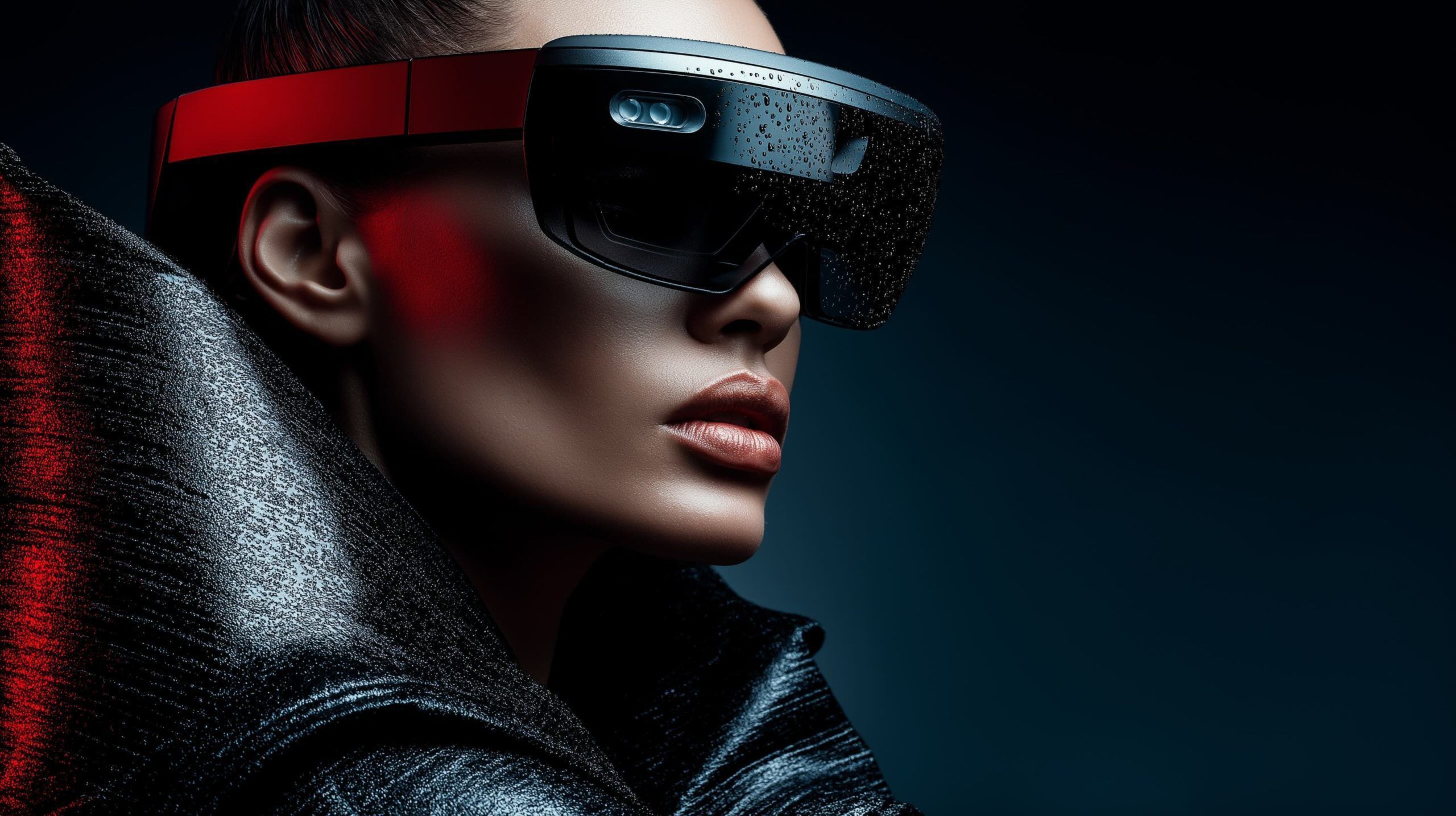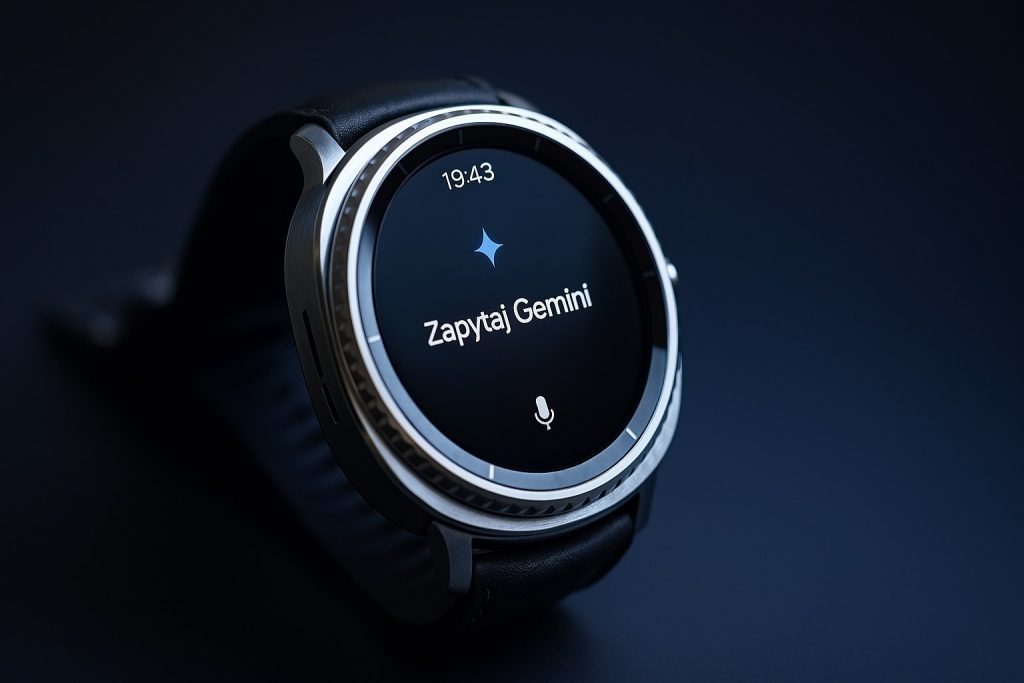- During Prime Day, Meta’s Quest 3S dropped to $250 for the 128GB model and $330 for the 256GB model, with an Amazon Gorilla Tag Cardboard Hero bundle for the 128GB and a Walmart Arkham Shadow plus three months of Quest+ bundle.
- Quest 3S, launched last October as a budget variant of Quest 3, uses the same Snapdragon XR2 Gen 2 chipset and most apps but relies on older Fresnel lenses and offers longer battery life.
- XREAL Air 2 Pro price dropped to $299 on Prime Day, with the headset weighing about 75–84 grams and delivering a 1080p per-eye display at 120Hz when connected via USB-C to a phone or laptop to act as an external monitor.
- XREAL One glasses fell to $449 on Prime Day, plus an extra 5% off with a code, cutting total savings to roughly $130 off the list price.
- Viture Pro XR was shown at Prime Day at about 30% off, around $314, and Viture announced four new AR glasses including the Beast, with a prototype featuring a 70° field of view.
- Viture Beast, due in October, has a 58° FOV, Sony micro-OLED displays, 1,280 nits brightness, and weighs 88 grams, priced at $549 at launch.
- ByteDance is developing a lightweight Pico MR headset with a tethered puck to offload processing, aiming for a form around 127 grams similar to the Bigscreen Beyond, and is designing its own chips for tracking.
- Apple plans Vision Pro 2 with an M4 chip and redesigned head strap to improve comfort, but the price remains $3,499 and a lighter, more affordable headset is not expected until 2027.
- Apple is reportedly developing lightweight smart goggles that would pair with the iPhone and offer features like photos, videos, Siri, and a privacy LED, with no display in the initial generation.
- Meta is expanding into medical XR, hiring regulatory affairs specialists to work on wearables and Software as a Medical Device approvals with the FDA and other authorities.
It’s been a blockbuster week in the XR world, with major developments spanning consumer gadgets, industry moves, and new immersive experiences. Apple is already prepping an upgraded Vision Pro while eyeing smart glasses of its own, and TikTok-owner ByteDance is cooking up a lightweight headset to challenge Meta. Meanwhile, Amazon’s Prime Day delivered steep discounts on VR headsets and AR glasses – and tech reviewers are raving about the value. We also saw new VR games get release dates, Meta expanding into healthcare, and strategic plays in the smart glasses “gold rush.” Below is a comprehensive roundup of the week’s VR/AR highlights, complete with expert quotes and sources. Let’s dive in!
Prime Day Delivers Big VR Deals (Quest 3S Price Slashed)
Amazon’s Prime Day brought major savings for VR enthusiasts. Meta’s recently-released Quest 3S headset saw its price drop to $250 (for the 128GB model) – about 15% off its $300 MSRP [1]. The higher-capacity 256GB Quest 3S also fell to $330 (down from $400). This last-minute sale was “one of the best deals in VR gaming” according to Road to VR [2], offering an affordable entry point into standalone virtual reality. Launched only last October, Quest 3S is a budget-friendly variant of the Quest 3 that runs all the same VR and mixed reality apps, albeit in a slightly bulkier design with older Fresnel lenses [3] [4]. “Even at $300, it’s simply a value that can’t be beat,” Road to VR wrote in its review – so at $250 the deal was especially enticing [5].
The Prime Day bundles differed by retailer. On Amazon, Meta offered a “Gorilla Tag Cardboard Hero” bundle with the 128GB Quest 3S, including exclusive in-game cosmetics and 1,000 Gorilla Tag currency rocks [6]. Walmart, by contrast, bundled the headset with the hit game Batman: Arkham Shadow plus three months of the Quest+ subscription (which grants two free titles per month) [7] [8]. “If you’re planning on playing Arkham Shadow then the Walmart offering is the better deal, while if you just want to play Gorilla Tag you might want to choose Amazon,” UploadVR advised [9]. Notably, Arkham Shadow – a Batman VR adventure that “far surpasses the previous Batman VR experience” – is one of the best Quest 3S games available [10]. The Quest+ subscription is another perk, delivering a rotating library of VR games (from Fruit Ninja to Tetris Effect) free each month [11]. At Walmart’s sale price of $251.49 (about $47 off), the Quest 3S bundle with Arkham and Quest+ was “a great way to get into VR” for half the cost of a high-end Quest 3 [12] [13]. Tech reviewers note that while Quest 3S uses simpler lenses and a slightly lower display spec than the premium Quest 3, it “maintains the same Snapdragon XR2 Gen 2… and even has a longer battery life” – making it a terrific value for newcomers [14].
“VR gaming is no longer the intimidating investment of the past, thanks to deals like this,” writes PCGamesN’s Niall Walsh, calling Quest 3S “the best VR headset for gamers on a budget” [15] [16]. At $250-$251, the Quest 3S sale “offers a great way to get into VR” – whether for standalone Quest titles like Asgard’s Wrath 2 and Skyrim VR, or by tethering to a PC for high-end games like Half-Life: Alyx [17] [18]. Prime Day also knocked 20% off official Quest accessories, including the Elite Strap (down to $55) and Link cable ($64) [19]. Even carrying cases saw steep cuts (one case was 48% off, just $26) [20]. It was a final Prime Day push for VR shoppers – as Road to VR noted, “the last chance to nab one of the best deals in VR gaming” this summer [21].
AR Glasses Shine: XREAL & Viture Score Discounts and Praise
Augmented reality eyewear had a breakout moment during Prime Day, with hefty deals and glowing reviews for the latest smart glasses. XREAL (formerly Nreal) offered big Prime Day discounts on its AR glasses lineup – and tech experts could not stop gushing about the experience these goggles provide. Windows Central’s Jez Corden calls the XREAL Air 2 Pro “one of the most unfairly overlooked tech accessories of recent times,” noting how they “instantly give virtually any device a cinema-size screen” for gaming or movies [22]. Normally $399, the XREAL Air 2 Pro dropped to $299 for Prime Day (save $100) [23]. Its higher-end sibling, the XREAL One glasses (which include onboard processing and menu controls), fell from $579 to $449 – plus an extra 5% off with code, totaling roughly $130 off [24]. “Grab them while they last!” Corden urged, after seeing the One’s price plunge as Prime Day kicked off [25].
Reviewers say these futuristic shades deliver exactly what AR early adopters have craved: a giant personal screen anywhere you go. “Imagine having a gigantic personal cinema-size display on demand – on a train, on a plane, no matter,” writes Corden, who uses XREAL glasses to play Xbox cloud games on the road [26]. The XREALs simply plug into your phone, Steam Deck, or laptop via USB-C and act as an external 1080p micro-OLED monitor floating in your view [27]. At about 75–84 grams, they look almost like chunky sunglasses but create the illusion of a 130–147 inch screen in front of you [28] [29]. “This is about as versatile an accessory as you can get,” Corden says, adding that unlike VR headsets, AR glasses “don’t fully co-opt your entire field of view,” so you can stay aware of your surroundings while watching content [30] [31]. With crystal-clear images (1920×1080 per eye at 120Hz) and a wide 50° field of view, XREAL’s displays “body the Meta Quest” in clarity for 2D media [32] [33]. It’s essentially a wearable big-screen TV – perfect for turning a cramped phone or handheld into a portable theater.
Early adopters are swapping out their monitors for these glasses. “Xreal has surged ahead with its new X1 chip and One Pro AR glasses, delivering a top-tier extended reality experience for both work and play,” wrote ZDNet’s Matthew Miller, who tested the XREAL One Pro model [34]. He found the glasses gave him a “200-inch screen to work with” – so much so that he’s “wondering why [he] still needs monitors” at all [35]. Miller noted that the One Pro’s combination of high clarity and large field of view allowed him to replace traditional displays for productivity tasks, a significant endorsement for AR’s practicality [36]. Lifehacker’s Stephen Johnson was similarly impressed, calling XREAL’s offering “the AR smart glasses I’ve been dying to try” after seeing them $150 off on Prime Day (they temporarily hit $249 for older models) – a deal that had him rushing to finally pick up a pair.
“The XREAL Air 2 Pros give you a huge cinema-style screen with virtually any device,” Corden explains, “Play Xbox Cloud Gaming or Netflix on a far, far bigger screen, anywhere, anytime” [37] [38]. Unlike bulky AR headsets of the past, these glasses emphasize comfort and simplicity over sci-fi gimmicks. XREAL “went for something far more ergonomic that comes scarily close to regular sunglasses,” trading the full 3D hologram approach for a super-portable personal display [39]. That strategy is paying off – as evidenced by the wave of positive reviews and surging interest once the price dropped.
Up-and-coming rival Viture also made headlines with its new Viture Pro XR glasses and an aggressive Prime Day promotion. Viture’s high-end AR glasses, which feature a 135-inch equivalent virtual screen at 120Hz, were 30% off for Prime Day [40] – falling from ~$469 to around $314 on Amazon [41]. (An extra coupon even stacked for some buyers, dropping the price to $314.10 [42].) “We’re big fans of these Viture Pro XR glasses,” noted one CNET deal post, highlighting the last-chance 30% discount. The Viture Pro XR is a direct competitor in the AR personal display arena, and has earned praise for its sharp image quality and comfort. “The simulated 135-inch display has… up to 4,000 nits of brightness,” GameSpot reports, and the lenses block external glare effectively [43]. In fact, Viture’s latest models are pushing boundaries in field of view and clarity – even coining a contentious new term, “4K-like”, to describe their visuals.
This week Viture announced four new AR glasses in its lineup (the Luma series and a top-tier model called “Beast”), and invited reporters to see a prototype boasting a massive 70° field of view [44] [45]. For context, most current AR glasses are around 40–50°; expanding to 70° starts approaching VR headset territory for immersion. Tom’s Guide’s Jason England got an early peek, calling it “the future of AR glasses” – but noting “it’s going to take time to get there” given the bulky prototype he saw [46]. “Viture says a 70-degree FOV model could launch as early as next year,” England reports, though significant optical challenges remain [47]. Still, even Viture’s near-term offerings are impressive. The upcoming Viture Beast model (due in October) will have an approx. 58° FOV, Sony micro-OLED displays, and advanced features like electrochromic dimming (tinting the lenses for outdoor use) and an onboard depth sensor for basic mixed reality [48] [49]. Viture cheekily markets the Beast’s visuals as “4K-like” – even though it’s actually 1080p per eye – because users in tests kept exclaiming that the image “looks like 4K!” [50] [51]. Thanks to 50% higher pixel density than Viture’s previous Pro model, the Beast is “the sharpest on the market,” the company claims [52]. Gizmodo’s James Pero, while poking fun at the “questionable marketing,” admits he still “wants them all the same” after learning about Beast [53] [54]. With Harman audio speakers, 1,280 nits brightness, and a relatively light 88g weight, the Beast packs a lot into a sleek package [55]. It will cost $549 at launch [56] – illustrating that AR glasses are quickly dropping in price from the thousands (just a couple years ago) to only a few hundred dollars now.
In short, AR eyewear had a breakthrough week: deep discounts put them in more hands, and new models promise even better experiences soon. The “smart glasses gold rush” is on, as one industry analyst put it, with companies like XREAL and Viture racing alongside giants like Meta to define the next must-have gadget [57]. If these early reviews are any indication, strapping a virtual 100-inch screen to your face might just become the hottest trend in entertainment and productivity.
ByteDance Builds a Pico Headset to Challenge Meta
Not to be outdone in XR, TikTok’s parent company ByteDance is developing a next-gen headset – one that sounds like a direct answer to Meta’s and Apple’s latest moves. “ByteDance is working on a lightweight Pico headset with a tethered puck… similar to Meta’s ultralight headset,” reports UploadVR, citing a new leak from The Information [58]. ByteDance, which acquired VR maker Pico in 2021, is reportedly designing a “lightweight mixed reality device” that resembles a pair of goggles [59]. To keep it super slim, it will offload processing to an external module (a compute “puck” worn on the body), much like Meta’s secret prototype codenamed “Horizon/Puffin”. The goal: dramatically reduce the front-heavy weight on the user’s face.
Though details are still under wraps, the upcoming Pico device is said to be similar in size to the Bigscreen Beyond – an ultra-compact PC VR headset known for being just ~127g and razor-thin [60]. In other words, ByteDance is aiming for ski goggle-sized XR glasses rather than a bulky helmet. Importantly, ByteDance is even developing “specialized chips” for this gadget, akin to Apple’s dedicated R1 sensor chip in Vision Pro [61]. By creating custom silicon to handle tracking and camera data, they likely hope to achieve the low latency and efficiency that Apple achieved with Vision Pro’s R1 [62].
This is a notable strategy shift. Last year, rumors swirled that ByteDance’s Pico unit had canceled its “Pico 5” headset in order to chase a more high-end Vision Pro competitor [63]. But according to The Information’s Juro Osawa and Wayne Ma, Pico has pivoted away from directly copying Apple’s $3,500 device. Instead, “ByteDance is taking a similar approach to [Meta’s] ultralight headset” that’s in development [64]. In fact, Meta’s own puck-powered AR/VR goggles (now codenamed “Phoenix”) are planned for 2026–27 [65]. ByteDance clearly doesn’t want to be left behind in this race to ultralight XR. “ByteDance has never been one to shy away from following Meta’s example,” UploadVR notes, pointing out that last year ByteDance launched the Pico 4 Ultra as “the first direct competitor to Quest 3,” matching Meta’s XR2 Gen2 chip and specs (and even upping the RAM and battery) [66]. Now, with Meta pouring R&D into slim, glasses-like headsets, ByteDance is shadowing that move too.
So what will ByteDance’s XR goggles do? The device is described as mixed reality, suggesting passthrough AR capabilities (i.e. high-resolution cameras to blend virtual content with the real world). ByteDance likely sees an opportunity to one-up Meta on weight/comfort and perhaps price. Pico already has strong footing in China’s VR market, but this could be their ticket to broader global presence – especially if they beat Meta or Apple to a truly glass-like form factor. The rumored headset would use pancake optics or micro-OLED displays to stay compact (Meta’s prototypes experiment with both) [67]. And ByteDance developing its own chips signals they’re serious about performance. It’s reminiscent of how Meta partnered with Qualcomm for custom XR chips, and how Apple of course uses its in-house silicon.
It’s unclear when this Pico device might launch (perhaps 2025 or 2026), as sources say design and specs aren’t finalized [68]. But the XR industry is buzzing at the prospect of another heavyweight entering the arena. ByteDance’s huge resources (thanks to TikTok’s success) could make them a formidable XR competitor. As Engadget quipped, the TikTok owner is building MR goggles “in challenge to Meta,” confirming that the battle for the next computing platform now extends well beyond the usual suspects [69]. Keep an eye on Pico – ByteDance might be about to shake up the headset market with a device that’s barely there on your face.
Apple’s Next Moves: Vision Pro Upgrade and “Smart Goggles”
Apple’s Vision Pro isn’t even out to consumers yet, but reports say an upgraded version is already on the way. According to Bloomberg’s Mark Gurman, Apple plans to release its first hardware refresh of the $3,499 Vision Pro as early as this year [70]. This “Vision Pro 2” (if we can call it that) would focus on boosting performance and comfort. Notably, it’s expected to swap the current M2 chip for a more powerful M4 chip, delivering a “significant performance upgrade” in the headset [71]. The M4 is the latest-generation Apple Silicon (as found in new Macs and iPads), so this change could improve the speed of AR/VR visuals and AI processing on the device.
Perhaps more importantly, Apple is addressing the Vision Pro’s biggest literal pain point: weight and fit. The new model will feature a redesigned head strap that makes the device “more comfortable to wear for longer periods” [72] [73]. Early testers of Vision Pro have complained that the current design, which weighs about 1.4 pounds, puts pressure on the face and can lead to neck strain. “Geez, it should weigh half of what it does… it’s quite uncomfortable around the nose and cheeks,” one user commented after trying Vision Pro [74] [75]. Apple’s revised strap won’t magically halve the weight, but it’s engineered to better distribute the load and reduce pressure points [76] [77]. In fact, Apple already includes two strap styles with the first-gen (a flexible Solo Loop and a more secure Dual Loop); many users found the Dual Loop much better for support [78]. The new strap design likely builds on that feedback to “mitigate issues like neck strain and head pain,” Gurman notes [79].
This upgraded Vision Pro is seen as a stop-gap refresh – a way to keep Apple’s XR platform up-to-date in 2025 without a full redesign [80]. It will not be cheaper or significantly lighter, and the price is expected to remain $3,499 [81]. In other words, Apple isn’t ready for a “Vision Non-Pro” just yet. A truly lighter, more affordable Apple headset (perhaps with a lower-end chip and less premium materials) is “on track for 2027,” according to Gurman’s sources [82]. That aligns with earlier Ming-Chi Kuo forecasts as well. So for now, Apple will incrementally improve the current Vision Pro – adding the M4 chip, new strap, and likely other minor tweaks – to entice early adopters and developers. The device hasn’t hit mass market, but Apple wants to show it’s rapidly iterating. As Reuters dryly noted, the Vision Pro has had a “struggling” launch so far [83], with some production hiccups and a niche target audience. This spec bump may help keep momentum (and app developer interest) going into 2025.
At the same time, Apple is quietly laying groundwork for true smart glasses. Rumors have accelerated about an Apple product to compete with Meta’s camera-equipped Ray-Ban smart glasses. MacRumors reports that Apple is “working on a set of smart glasses that will rival Meta’s popular AI-equipped Ray-Bans”, aiming to offer similar features [84]. Unlike the Vision Pro, these would be lightweight glasses – possibly with no integrated display at first [85]. Instead, they’d function as an iPhone-connected wearable, providing useful features via audio, cameras, and voice assistant AI [86] [87]. Think of something like an amped-up pair of spectacles that can take photos, record video, answer your questions (via Siri/AI), give you turn-by-turn directions, and maybe show simple status LEDs or audio cues – all while looking like normal glasses.
Why no display initially? Because “true, lightweight AR glasses are still years away,” MacRumors explains – the tech to miniaturize projectors and batteries into a sleek glasses frame isn’t ready yet [88]. So Apple’s first foray may be “smart goggles” (some insiders use that term) that bridge the gap: essentially a fashionable glasses frame with cameras, mics, speakers, and an Apple chipset for AI and connectivity [89] [90]. They’d rely on your iPhone for heavy processing and data, just as the Apple Watch did in its early versions [91]. In fact, the glasses are expected to use a custom Apple chip based on the Apple Watch’s SoC, optimized for low power and sensor input [92]. Features would likely include the ability to snap photos or videos with a tap on the frame, listen to music or phone calls via built-in speakers, interact with Siri for information, and possibly overlay simple cues (for example an LED indicator for notifications or a laser projection of text into the lens, though current rumors suggest no true AR display yet) [93] [94].
Apple appears to be treating this as the next wearable category akin to Apple Watch. They are reportedly planning multiple frame styles and materials to make the glasses fashionable, offering both clear prescription lenses and sunglass options [95] [96]. The glasses would be positioned as an iPhone accessory, probably in the price range of AirPods or an Apple Watch (a few hundred dollars) [97]. Meta’s Ray-Ban Stories start around $300, and Apple would likely be in that ballpark too. Job listings and patent filings have revealed Apple is designing camera privacy indicators (an LED that lights up when recording, to address spying concerns) and experimenting with touch controls on the temples [98] [99]. They are also heavily focusing on AI integration – for instance, using the glasses’ camera to identify objects or text in your environment and then having an AI assistant provide context or answer questions about what you’re seeing [100]. This aligns with features like Visual Look Up on iPhone, but in real-time via wearable glasses.
Don’t hold your breath for these Apple glasses in the immediate future; insiders say they are “not expected to launch for a few more years.” Gurman’s reports suggest around 2026 as a conceivable timeframe (or 2025 at the absolute earliest if things progress quickly). Apple is still in the prototyping stage. However, the recent news of Meta’s investment in EssilorLuxottica (more on that below) and the popularity of Ray-Ban smart glasses likely nudged Apple to prioritize this project. “Apple is still exploring smart glasses similar to Meta’s Ray-Bans,” MacRumors wrote after the latest Bloomberg update [101]. The bottom line: Apple is doubling down on spatial tech – high-end Vision Pro for immersive AR/VR today, and simpler smart glasses in the pipeline to keep us connected (and stylish) on the go.
New VR Games: Besiege VR and Grit & Valor 1949 Incoming
VR gaming fans got some exciting updates this week, with two notable titles locking in release plans:
- Besiege VR – the popular physics-based war machine builder – confirms its launch on Meta Quest for July 31, 2025 [102]. Originally a hit indie on PC (known for its elaborate contraptions and castle-crushing chaos), Besiege is getting a full VR adaptation by 3R Games. The developers say it’s been “rebuilt from the ground up” for VR, with a new motion control system, immersive haptic feedback, and spatial 3D audio [103]. Players will be able to construct medieval siege engines and crazy contraptions from over 70 parts, then test them in a 55-level single-player campaign [104]. Think catapults, trebuchets, flying machines – all assembled part-by-part with your hands in VR. The studio even confirmed you can import creations from the PC version into the Quest version (with some size limitations) so you won’t lose your favorite designs [105]. Besiege VR will hit the Meta Quest Store at a price of $20 [106]. Given the original game’s huge following on YouTube (for its hilarious physics failures and creative engineering), the VR edition is highly anticipated. UploadVR showcased a new trailer at their recent Summer showcase, and it looks like Besiege’s brand of sandbox mayhem translates perfectly to roomscale VR [107]. Get ready to watch your constructions wobble, roll, and explode in your virtual workshop soon.
- Grit and Valor: 1949 – a dieselpunk real-time tactics game – is coming to all major VR headsets on August 21, 2025 [108]. This title brings an alt-history twist to tactical strategy: it’s set in an alternate 1949 where Axis powers dominate Europe, and players command an elite squad of mech units in a resistance fightback [109]. The gameplay is described as a “real-time tactics roguelite” with a perspective inspired by tabletop war games [110]. Essentially, you’ll strategize from a diorama-like view, issuing orders to your mech platoon, completing bite-sized missions, then regrouping to upgrade between runs (the roguelite element) [111]. Grit and Valor – 1949 originally launched as a flatscreen PC game by UK studio Milky Tea. Now it’s being adapted to VR with the help of veteran VR developer nDreams (known for titles like Phantom: Covert Ops). The VR edition will land on Meta Quest, PlayStation VR2, and SteamVR simultaneously [112] – good news for players on any platform. UploadVR notes that the game was teased during Sony’s recent PSVR2 spotlight, making it one of the rare strategy offerings for VR in 2025 [113]. Between this and the upcoming Firewall Ultra, PSVR2’s library continues to grow. Grit and Valor’s mix of mech warfare and board game-like tactics could fill a nice niche for those who enjoy strategy over shooter gameplay in VR. Mark your calendars for late August if liberating alternate Europe one mech battle at a time sounds like your cup of tea.
In other VR gaming tidbits: the classic brawler GORN 2 surprise-launched on PSVR2 (more gladiatorial gore for console VR) [114], an Archery Golf VR game hit Early Access on PC [115], and World War Z VR just got a preview – though impressions were mixed on that one [116]. With summer showcases now done, we’re seeing a steady stream of VR titles locking in release dates as promised. It’s shaping up to be a fun back half of the year for VR gamers across Quest, PC, and PSVR platforms.
Meta Expands XR from Battlefield to Hospital
Meta Platforms, the company behind Quest headsets, is broadening its XR vision beyond entertainment – and even beyond the battlefield – into the medical realm. Just last week Meta announced a partnership with defense tech firm Anduril to supply XR tech for military training and operations [117]. (Anduril, founded by Oculus-veteran Palmer Luckey, develops AR/VR battlefield systems, so Meta’s involvement signals a big military use-case for Quest tech). Now, new job listings show Meta is also targeting healthcare as the next frontier for its AR/VR technology [118] [119].
Road to VR uncovered multiple postings on Meta’s careers site seeking experts in medical device regulations and compliance – a strong hint that Meta is developing XR products for medical use that would require regulatory approval [120]. “We’re seeking a regulatory affairs specialist… to work on wearables and Software as a Medical Device (SaMD) applications,” one listing reads [121] [122]. It specifically mentions “cutting-edge wearable technologies, including augmented reality glasses, wrist wearables, and other innovative devices” in the context of U.S. FDA approvals [123]. Another role for a regulatory strategy specialist describes working with external bodies like the FDA and international health authorities to “enable rapid market access to Meta Reality Labs products” in the medical arena [124].
In plain terms, Meta is gearing up to build medical-grade AR/VR hardware or software – things like AR glasses for surgeons, VR systems for patient therapy or training, or perhaps health-monitoring wearables (the mention of “wrist wearables” stands out, possibly related to Meta’s EMG wristband project for AR input, which could have rehab or prosthetic applications). To launch such products, Meta will need to comply with medical device regulations, hence hiring these specialists now. It’s a significant step, as it signals Meta’s intent to go beyond consumer and enterprise use-cases and enter the heavily regulated healthcare tech market.
Meta hasn’t announced any specific medical XR product yet, so we can only speculate. But consider some possibilities: VR surgical training simulators (already some startups do this – a VR training platform could be offered on Quest hardware for medical schools), AR-assisted surgery glasses (showing patient vitals or MRI overlays to surgeons in real-time), mental health and physical therapy VR applications (Meta could seek FDA clearance for VR treatments for anxiety, pain distraction, or stroke rehab – areas where early research is promising). Importantly, Meta’s listings call out “Software as a Medical Device” – meaning even purely software AR/VR apps intended to diagnose or treat conditions could require FDA approval. So Meta might be building out an internal team to navigate those pathways for forthcoming apps (imagine an AI vision assistant for the visually impaired running on Meta AR glasses, as a hypothetical example – that would likely be a regulated SaMD).
Meta’s interest in health isn’t entirely new – they’ve dabbled in partnerships for medical training content in VR and highlighted use of Quest by surgeons for practice. But this hiring push indicates a much more serious, product-focused approach. “The company also thinks its XR tech has a bigger role to play,” writes Road to VR’s Ben Lang, noting Meta “is now starting to think seriously about the medical field.” [125]. With the military and education sectors already being explored for Quest, medicine is the next logical step for XR’s transformative potential.
It remains to be seen what Meta will roll out in healthcare, but clearly Zuckerberg’s Reality Labs is looking beyond games and productivity. They envision XR as a platform for everything, from operating theaters to therapy sessions. And Meta’s not alone – just this week a medical journal highlighted how virtual reality is “redefining healthcare education by providing immersive learning experiences” for med students [126]. If Meta can get its tech approved for clinical use, it could find a lucrative and impactful niche in hospitals and clinics, not just homes and offices.
Meta Bets Big on Smart Glasses: Stake in Ray-Ban Maker
One of the clearest signs of the smart glasses gold rush came with news that Meta has quietly bought a sizable stake in EssilorLuxottica, the world’s largest eyewear company. EssilorLuxottica is the Franco-Italian conglomerate behind Ray-Ban, Oakley, and many luxury eyewear brands – and notably, Meta’s partner on the Ray-Ban Stories/Meta smart glasses. According to Reuters, Meta acquired roughly a 3% stake in EssilorLuxottica, an investment of around €3 billion ($3.5B) [127] [128]. The purchase was done under the radar and only came to light through reports in early July. EssilorLuxottica’s shares “jumped” ~5% on the news [129], as investors saw it as a strong vote of confidence in the company’s tech direction.
For Meta, spending billions to own a chunk of a 170-year-old eyewear firm might seem unusual – but it makes strategic sense. “The investment should be read as a vote of confidence in EssilorLuxottica in the smart-glasses opportunity,” said Bernstein analysts in a note [130]. Essentially, Meta is cementing its alliance with the makers of its current and future smart frames. Last year, The Wall Street Journal scooped that Meta was in talks to buy a 5% stake, which Mark Zuckerberg described as a “symbolic gesture to cement the partnership.” [131] Now, Meta has gone ahead with ~3% and may consider boosting its holding to ~5% over time [132]. This tightens their collaboration as they develop next-gen smart glasses integrating Meta’s tech and Luxottica’s style and manufacturing muscle.
Indeed, Meta and EssilorLuxottica have already announced new products beyond the Ray-Ban Stories. In September, Zuckerberg revealed they teamed up with Oakley (another Luxottica brand) on a product called the “Oakley Meta HSTN.” [133] This upcoming model of smart sunglasses will feature a hands-free high-res camera, open-ear speakers, water resistance, and built-in Meta AI – essentially a sportier, more advanced take on smart glasses compared to the casual Ray-Bans [134]. It shows the breadth of possibilities when you combine Meta’s tech (cameras, voice AI, connectivity) with Luxottica’s brands: imagine smart Oakleys for athletes, Armani smart glasses as a fashion accessory with notifications – the spectrum is huge.
Importantly, Meta said millions of the current Ray-Ban Meta smart glasses (the 2023 second-gen model with AI) have been sold [135]. That’s a strong signal of product-market fit that likely spurred Meta to deepen the partnership. EssilorLuxottica’s CEO Francesco Milleri indicated earlier this year that they plan to boost production capacity for smart glasses and expand collaboration with Meta to “other brands.” [136] Now with Meta as a stakeholder, those plans will only accelerate. We can expect more models, more styles, and perhaps broader distribution of Meta-powered eyewear.
All of this points to a future where smart glasses could become as ubiquitous as smartphones. Meta is positioning itself to dominate that space: owning part of the key manufacturer, controlling the software and AI that power the glasses, and leveraging its social/media ecosystem to make them useful. As Business of Fashion put it, “Meta’s $3.5B investment… is the clearest sign yet that some of the biggest players see wearable AI glasses as the next big platform.” [137] A “Smart Glasses Gold Rush” is underway [138], with Meta, Apple, Google (recall, Google invested in North Focals and is surely plotting a return), and others all in the fray. For now, Meta and Luxottica’s partnership is the one to watch – an alliance of Silicon Valley and Italian design aiming to put a computer on your face that actually looks cool.
(As a side note, another fascinating XR hardware tidbit: Meta also opened a new “Audio Lab” in the UK this week, in the so-called Ox-Cam tech corridor [139]. This R&D hub will focus on spatial audio and AR/VR sound technologies. It shows Meta’s commitment to perfecting not just visuals but audio for immersive experiences – crucial for both VR headsets and smart glasses where discreet, high-quality sound is a selling point.)
XR in the Wild: VR Tours and AR Classrooms Breaking New Ground
Finally, it’s worth highlighting how VR/AR tech is increasingly being used in real-world settings – from tourism to education – often in innovative ways:
- In Hawaii, a company launched an “immersive virtual reality bus tour” in Honolulu that blends real sightseeing with fantastical VR overlays [140]. The service, called XploreRide, equips a full-size tour bus with VR headsets and synchronized content so that as you drive past Honolulu’s actual landmarks (Diamond Head, Waikiki Beach, etc.), you experience virtual scenes like “traveling alongside deep-sea marine life, coral reefs, [and] volcanoes” projected over the real world [141] [142]. “The experience combines actual scenery with VR technology to take guests through shimmering underwater scenes while touring Honolulu,” Hawaii News Now reports [143]. Riders look out the window and see the real street, but through the headset it appears as though whales and dolphins are swimming alongside the bus, or that a Hawaiian volcano goddess is rising in the distance. It’s a 50-minute tour that essentially transforms a city ride into a part-educational, part-fantasy adventure. XploreRide’s eco-friendly electric bus will kick off tours on July 22 with a traditional Hawaiian blessing ceremony [144]. This kind of location-based VR could add a whole new dimension to tourism – letting visitors “see the unseen” (like historical events or mythical stories) anchored to the places they’re actually visiting.
- Over in North Carolina, the city of Winston-Salem is getting its first VR arcade, aptly named Ctrl V, opening later this month. Local news WXII gave a sneak peek, noting the arcade will offer “more than 150 games” across a range of VR genres [145]. “It’s a different experience and it’s virtual,” said owner Larry Stowe, emphasizing that many people in the area haven’t tried high-end VR yet [146]. The arcade will let customers don headsets and play anything from immersive shooters to escape rooms to rhythm games without needing to own expensive equipment at home. With VR popularity rising, venues like this provide community social experiences and exposure to the tech. We’ve seen VR arcades pop up in many cities worldwide, but each new one (especially in smaller markets like Piedmont Triad) shows how VR is gradually entering the mainstream entertainment mix.
- In India, a deep-tech startup from Kochi is using AR/VR to revolutionize rural education. Infusory, a Kerala-based company, has rolled out its “TutAR” augmented reality app to 121 tribal schools in Maharashtra [147]. As reported by The New Indian Express, this is part of a government program to enhance tribal school infrastructure with modern tools [148]. TutAR provides a library of curriculum-aligned 3D models that teachers and students can use to visualize concepts in science, math, geography, and more [149] [150]. For example, a teacher can project a lifelike 3D model of the human heart in the classroom, which students can rotate, zoom into, and interact with – making lessons far more engaging than 2D diagrams [151]. What’s critical is that many of these tribal areas lack internet connectivity or fancy hardware, so TutAR works entirely offline and on basic devices like tablets or projectors [152]. “The app works completely offline, without the need for Wi-Fi or mobile data,” explained co-founder Shyam Pradeep, noting it’s tailored for “adverse conditions.” [153]. It uses Infusory’s proprietary on-screen AR tech that doesn’t require AR glasses – instead it can display AR through a tablet or even via a projector onto a surface [154]. Over 5,000 schools in India are already using the platform, and educators say it “makes learning more enjoyable” and effective, especially for visualizing complex topics [155]. It’s a heartening example of XR being adapted to local needs and constraints, potentially leapfrogging some of the challenges in rural education. The Maharashtra tribal schools project could serve as a model for other states to follow [156].
From tourist buses to classrooms, these stories show how immersive tech is breaking out of the tech bubble and finding practical, impactful uses. As the hardware becomes cheaper and more portable (or in the case of AR, as simple as a phone app), we’ll continue to see VR and AR enriching experiences across travel, learning, art, and beyond. The lines between the virtual and real worlds are blurring in fascinating ways – sometimes for fun, sometimes to solve real problems.
In summary, the VR/AR landscape is accelerating on all fronts: affordable devices are lowering the entry barrier for consumers, major players are doubling down (with big investments and R&D in next-gen hardware), and content – from games to enterprise applications – is expanding rapidly. “The future of smart glasses is looking so much closer now,” writes BoF’s Marc Bain [157], and indeed this week we saw concrete signs of that future: Apple laying plans, Meta betting billions, and new devices that are actually delivering on the promise of blending digital and physical worlds. It’s an exciting time to be following XR. Whether you’re a gamer awaiting the next VR hit, a developer exploring AR possibilities, or just someone intrigued by the tech, there’s a sense that all the pieces are coming together. Stay tuned, because as this roundup shows, the XR revolution is picking up steam – and each week brings a new twist.
Sources: Road to VR [158] [159], UploadVR [160] [161], PCGamesN [162] [163], Windows Central [164] [165], ZDNet [166], Gizmodo [167] [168], Tom’s Guide [169] [170], The Information via UploadVR [171] [172], Reuters [173] [174], MacRumors [175] [176], Road to VR [177] [178], Hawaii News Now [179], WXII/ MuckRack [180], New Indian Express [181] [182].
References
1. www.roadtovr.com, 2. www.roadtovr.com, 3. www.roadtovr.com, 4. www.uploadvr.com, 5. www.roadtovr.com, 6. www.uploadvr.com, 7. www.uploadvr.com, 8. www.pcgamesn.com, 9. www.uploadvr.com, 10. www.pcgamesn.com, 11. www.pcgamesn.com, 12. www.pcgamesn.com, 13. www.pcgamesn.com, 14. www.pcgamesn.com, 15. www.pcgamesn.com, 16. www.pcgamesn.com, 17. www.roadtovr.com, 18. www.pcgamesn.com, 19. www.roadtovr.com, 20. www.roadtovr.com, 21. www.roadtovr.com, 22. www.windowscentral.com, 23. www.windowscentral.com, 24. www.windowscentral.com, 25. www.windowscentral.com, 26. www.windowscentral.com, 27. www.windowscentral.com, 28. www.windowscentral.com, 29. www.windowscentral.com, 30. www.windowscentral.com, 31. www.windowscentral.com, 32. www.windowscentral.com, 33. www.windowscentral.com, 34. thenote.app, 35. www.linkedin.com, 36. thenote.app, 37. www.windowscentral.com, 38. www.windowscentral.com, 39. www.windowscentral.com, 40. digitrendz.blog, 41. www.gamespot.com, 42. www.gamespot.com, 43. www.gamespot.com, 44. www.tomsguide.com, 45. www.tomsguide.com, 46. www.tomsguide.com, 47. www.tomsguide.com, 48. gizmodo.com, 49. gizmodo.com, 50. gizmodo.com, 51. gizmodo.com, 52. gizmodo.com, 53. gizmodo.com, 54. gizmodo.com, 55. gizmodo.com, 56. gizmodo.com, 57. www.reuters.com, 58. www.uploadvr.com, 59. www.uploadvr.com, 60. www.uploadvr.com, 61. www.uploadvr.com, 62. www.uploadvr.com, 63. www.uploadvr.com, 64. www.uploadvr.com, 65. www.uploadvr.com, 66. www.uploadvr.com, 67. www.uploadvr.com, 68. www.uploadvr.com, 69. www.tipranks.com, 70. 9to5mac.com, 71. 9to5mac.com, 72. 9to5mac.com, 73. 9to5mac.com, 74. 9to5mac.com, 75. 9to5mac.com, 76. 9to5mac.com, 77. 9to5mac.com, 78. 9to5mac.com, 79. 9to5mac.com, 80. 9to5mac.com, 81. 9to5mac.com, 82. 9to5mac.com, 83. www.theverge.com, 84. www.macrumors.com, 85. www.macrumors.com, 86. www.macrumors.com, 87. www.macrumors.com, 88. www.macrumors.com, 89. www.macrumors.com, 90. www.macrumors.com, 91. www.macrumors.com, 92. www.macrumors.com, 93. www.macrumors.com, 94. www.macrumors.com, 95. www.macrumors.com, 96. www.macrumors.com, 97. www.macrumors.com, 98. www.macrumors.com, 99. www.macrumors.com, 100. www.macrumors.com, 101. www.macrumors.com, 102. www.uploadvr.com, 103. www.uploadvr.com, 104. www.uploadvr.com, 105. www.uploadvr.com, 106. www.uploadvr.com, 107. www.uploadvr.com, 108. www.uploadvr.com, 109. www.uploadvr.com, 110. www.uploadvr.com, 111. www.uploadvr.com, 112. www.uploadvr.com, 113. www.uploadvr.com, 114. www.uploadvr.com, 115. www.uploadvr.com, 116. www.roadtovr.com, 117. www.roadtovr.com, 118. www.roadtovr.com, 119. www.roadtovr.com, 120. www.roadtovr.com, 121. www.roadtovr.com, 122. www.roadtovr.com, 123. www.roadtovr.com, 124. www.roadtovr.com, 125. www.roadtovr.com, 126. www.wolterskluwer.com, 127. www.reuters.com, 128. www.reuters.com, 129. www.reuters.com, 130. www.reuters.com, 131. www.reuters.com, 132. www.reuters.com, 133. www.reuters.com, 134. www.reuters.com, 135. www.reuters.com, 136. www.reuters.com, 137. www.businessoffashion.com, 138. www.businessoffashion.com, 139. macdailynews.com, 140. www.hawaiinewsnow.com, 141. www.hawaiinewsnow.com, 142. www.hawaiinewsnow.com, 143. www.hawaiinewsnow.com, 144. www.hawaiinewsnow.com, 145. muckrack.com, 146. muckrack.com, 147. www.newindianexpress.com, 148. www.newindianexpress.com, 149. www.newindianexpress.com, 150. www.newindianexpress.com, 151. www.newindianexpress.com, 152. www.newindianexpress.com, 153. www.newindianexpress.com, 154. www.newindianexpress.com, 155. www.newindianexpress.com, 156. www.newindianexpress.com, 157. muckrack.com, 158. www.roadtovr.com, 159. www.roadtovr.com, 160. www.uploadvr.com, 161. www.uploadvr.com, 162. www.pcgamesn.com, 163. www.pcgamesn.com, 164. www.windowscentral.com, 165. www.windowscentral.com, 166. thenote.app, 167. gizmodo.com, 168. gizmodo.com, 169. www.tomsguide.com, 170. www.tomsguide.com, 171. www.uploadvr.com, 172. www.uploadvr.com, 173. www.reuters.com, 174. www.reuters.com, 175. www.macrumors.com, 176. www.macrumors.com, 177. www.roadtovr.com, 178. www.roadtovr.com, 179. www.hawaiinewsnow.com, 180. muckrack.com, 181. www.newindianexpress.com, 182. www.newindianexpress.com









